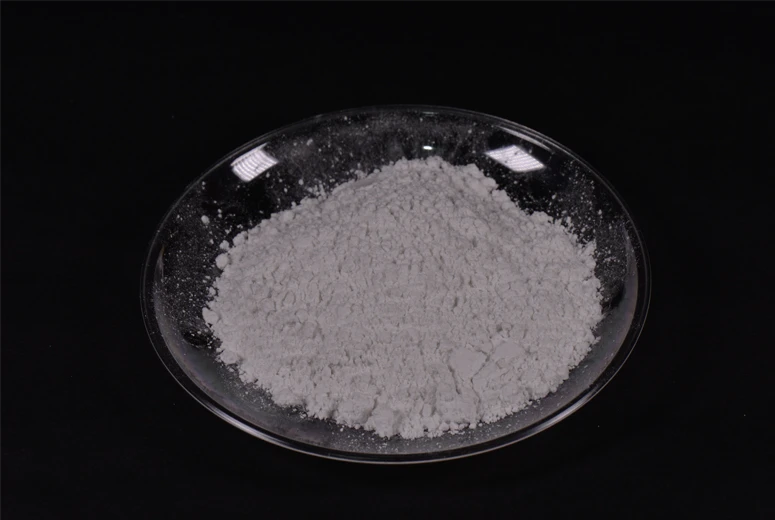Feb . 16, 2025 11:40
Back to list
G-100 Phlogopite
Phlogopite and muscovite are two prominent members of the mica mineral family, sharing some commonalities yet exhibiting distinct differences that make them unique in various applications. Recognizing their individual features and comparing them can make a significant difference for industries relying on mica for its versatile qualities.
Their distinct characteristics also affect their geological applications. Phlogopite’s resilience to heat makes it a valuable mineral for studying high-temperature geological processes. Geologists utilize it to understand the mechanisms of mantle metasomatism and the formation of ultramafic rocks, which are seldom stable at the earth’s surface conditions. Muscovite, with its chemical variability, is frequently employed in geochronology, especially potassium-argon and rubidium-strontium dating. Its widespread occurrence and sensitivity to metamorphic conditions make it a reliable mineral for interpreting geological history and metamorphic processes. The market demands adaptability, and each mineral answers the call differently. Phlogopite’s market thrives in sectors that prioritize thermal shielding and electrical insulation under high temperatures, while muscovite garners attention for digital electronics and personal care products. This dichotomy underscores the need for industries to assess their specific requirements and select the appropriate mica based on the performance criteria desired. As sustainability trends gain momentum, both phlogopite and muscovite face scrutiny over their environmental impact. Companies are now inclined to conduct comprehensive life cycle assessments to measure the ecological impact from extraction to end-of-life disposal. Innovations in recycling and repurposing mica materials are becoming essential to reduce their carbon footprint, catering to environmentally-conscious consumers and manufacturers. In summary, the decision to use phlogopite vs. muscovite depends heavily on the specific needs of the application. While phlogopite is unmatched in scenarios demanding robust thermal tolerance, muscovite excels where clarity and dielectric properties are paramount. This nuanced understanding is crucial for enterprises to maintain competitive advantages and drive innovation within their respective markets. Evolving market dynamics and environmental considerations will continue to shape the future applications and value propositions of both minerals, underscoring the importance of continuous research and development. Industry stakeholders, including manufacturers, geologists, and environmental scientists, must collaborate to harness these minerals' potential sustainably and efficiently, ensuring their continued relevance and utility in the years to come.


Their distinct characteristics also affect their geological applications. Phlogopite’s resilience to heat makes it a valuable mineral for studying high-temperature geological processes. Geologists utilize it to understand the mechanisms of mantle metasomatism and the formation of ultramafic rocks, which are seldom stable at the earth’s surface conditions. Muscovite, with its chemical variability, is frequently employed in geochronology, especially potassium-argon and rubidium-strontium dating. Its widespread occurrence and sensitivity to metamorphic conditions make it a reliable mineral for interpreting geological history and metamorphic processes. The market demands adaptability, and each mineral answers the call differently. Phlogopite’s market thrives in sectors that prioritize thermal shielding and electrical insulation under high temperatures, while muscovite garners attention for digital electronics and personal care products. This dichotomy underscores the need for industries to assess their specific requirements and select the appropriate mica based on the performance criteria desired. As sustainability trends gain momentum, both phlogopite and muscovite face scrutiny over their environmental impact. Companies are now inclined to conduct comprehensive life cycle assessments to measure the ecological impact from extraction to end-of-life disposal. Innovations in recycling and repurposing mica materials are becoming essential to reduce their carbon footprint, catering to environmentally-conscious consumers and manufacturers. In summary, the decision to use phlogopite vs. muscovite depends heavily on the specific needs of the application. While phlogopite is unmatched in scenarios demanding robust thermal tolerance, muscovite excels where clarity and dielectric properties are paramount. This nuanced understanding is crucial for enterprises to maintain competitive advantages and drive innovation within their respective markets. Evolving market dynamics and environmental considerations will continue to shape the future applications and value propositions of both minerals, underscoring the importance of continuous research and development. Industry stakeholders, including manufacturers, geologists, and environmental scientists, must collaborate to harness these minerals' potential sustainably and efficiently, ensuring their continued relevance and utility in the years to come.
Prev:
Next:
Latest news
-
Transforming Surfaces with Mica-Enhanced Paints in Coatings and DecorationNewsJul.02,2025
-
The Ultimate Guide to Mica-Based Luminous Colors with Pearlescent PigmentNewsJul.02,2025
-
The Critical Role of Mica in Industrial Applications in Welding and Oil FieldsNewsJul.02,2025
-
Revolutionizing Automotive Aesthetics with Modified Plastics Pearlescent PigmentsNewsJul.02,2025
-
The Secret with Mica Powder for Cosmetics Behind Radiant, Natural MakeupNewsJul.02,2025
-
Enhancing Performance in Polymer Applications with Mica Powder for RubberNewsJul.02,2025
Products categories









